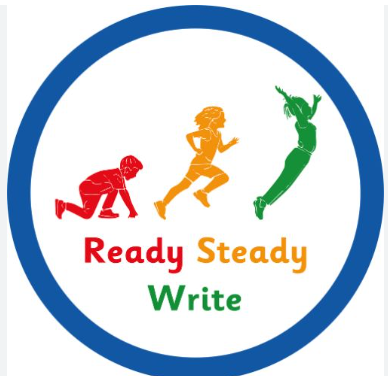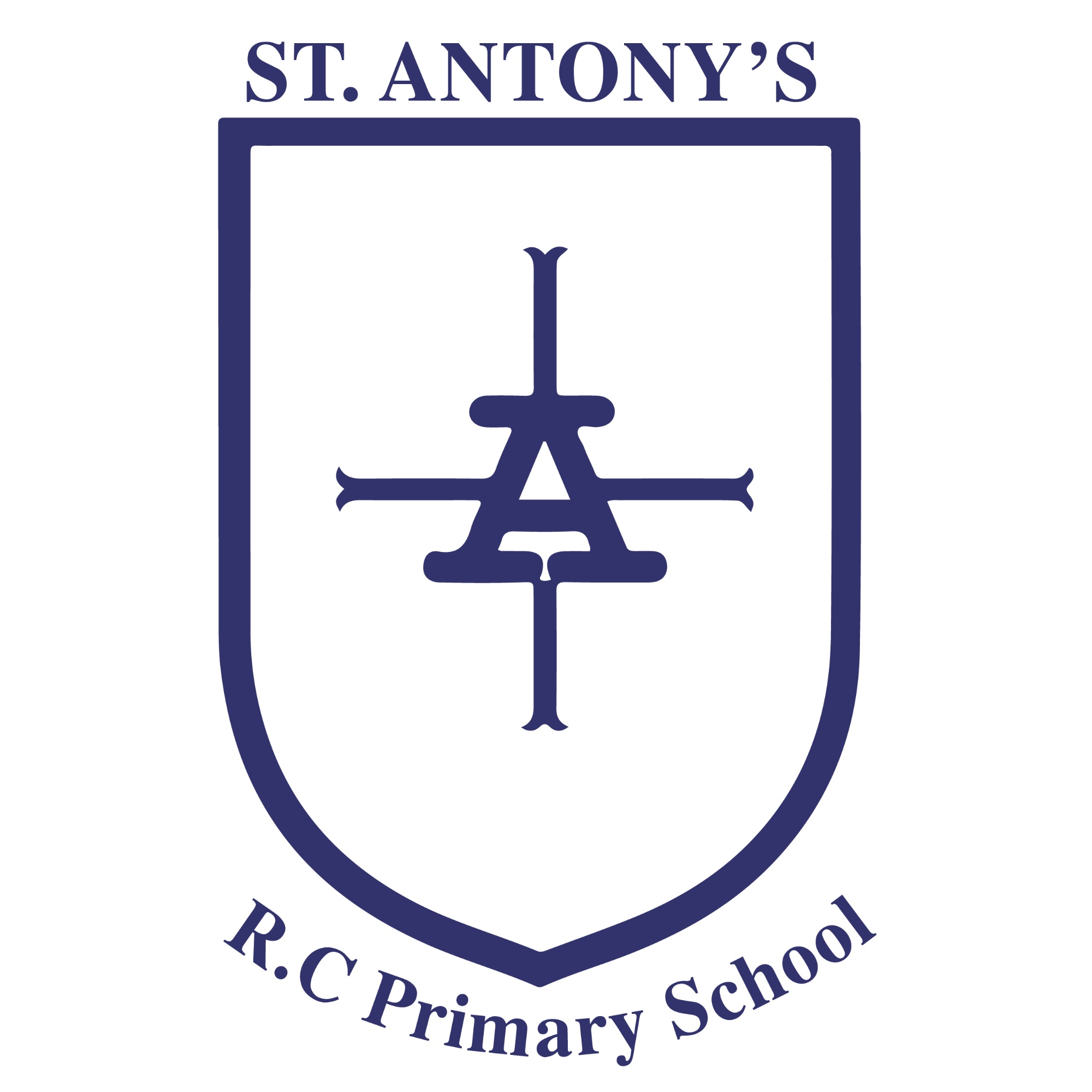Writing

"Write therefore the things that you have seen, those that are and those that are to take place after this." Revelations 1:19

We are the Writing Ambassadors for 2023-2024.
"I love writing stories as it allows me to be creative." (Year 4 Pupil)
"I like writing as I always end up using new vocabulary and I love learning new words." (Year 2)
"Writing for me is like I have been given freedom on a page to be inventive." (Year 5 pupil)
"I like writing stories because I have really good ideas." (Year 1 Pupil)

At St. Antony's, we believe that immersing children in a range of high quality texts leads to effective writing outcomes. Therefore, we have implemented Ready Steady Write into our writing curriculum from September 2024.

Vehicle texts are located prominently in the classrooms - Year 6 Autumn - Rose Blanche
Intent
At St. Antony's, we put great emphasis on writing as a skill for life. Enabling our children to develop into confident writers, who can adapt their writing to fit any genre or need, is at the forefront of our teaching. We believe that writing gives you the ability to think, communicate and make connections with the wider world. We aim to develop self-assured, fluent and enthusiastic writers who can express themselves adeptly for a range of purposes, using rich and varied language, evaluating and making improvements along the way. Through a breadth of genres, we enable our pupils to achieve their best within the National Curriculum and our wider curriculum. We ensure that our pupils are immersed in a wealth of texts and the experiences that enable them to understand them and develop their writing skills. We have ensured our curriculum for writing supports the needs and diversity of the community in which we serve. We aim for all pupils to leave St. Antony's as well rounded individuals with a passion for writing.
Implementation
Ready Steady Write uses engaging, vocabulary-rich texts to create a wealth of writing opportunities within and across the curriculum. The books provide a lots of opportunities:
- to develop grammar and punctuation knowledge and understanding to use and apply across the wider curriculum, through sentence accuracy sessions;
- explore the writing structure and features of different genres, identifying the purpose and audience;
- plan and write an initial piece of writing with a clear context and purpose before evaluating the effectiveness of writing by editing and redrafting.
Building on this foundation, we teach writing using a range of strategies which include:
- Modelled writing – Teachers model writing and editing to demonstrate the high expectations they have. They narrate their thinking in order to make the writing process explicit and provide a rich and varied vocabulary for the children to utilise in their own work. (This happens daily, through sentence accuracy.)
- Shared writing – Teachers use the ideas from the children to create shared pieces of writing. This enables the children to see the writing process in action as well as having pride and ownership over the finished piece.
- Scaffolding - To develop writing ideas and language acquisition.
- Editing - Using sentence checkers and modelling how to edit writing.

Each English unit follows this process:
Immerse
This is where the children are immersed in the focus genre with lots of reading.
Examples of activities for these lessons include:
- reading several examples or extracts of the genre
- speaking and listening and role play
- 'magpie' vocabulary and literary language to use
- incidental writing opportunities like mind-maps and notes on post its
Analyse
This is the time to identify the key features of the genre through discussion and text marking.
Examples of activities for these lessons include:
- giving examples of What a Good One Looks Likes and text mark together, drawing up a success criteria. This can be displayed on working wall and used in books for writing lessons
- grammar features relevant to this genre
- presentational features relevant to this genre
Plan and Write
We follow a scaffolded, modelled writing approach. Writing lessons include opportunities for the children to edit and improve their written work.
- Teacher models how to plan an example of the text type, using all the elements captured in the Immerse and Analyse days and the children then have a go at writing a plan for the different example they will be writing in the text type.
- Teacher models how to write the introduction for their example and the children then have a go at writing their introductions.
- Teacher models how to improve their plan/introduction and then the children have a go at improving their own.
- Teacher models the next couple of key features of the text type; children have a go for themselves.
- Teacher models improving the text, children have a go for themselves.
- Teacher models writing the ending for the text type and re-evaluates it against success criteria already agreed and shown on working wall.

Year 4 Modelled Write
Writing in EYFS

In EYFS, the children learn a story song for their model text.
Reception Class, September 2024
For the story sentence(s) there are 4 story friends which help children identify different parts of a simple story. They support children's understanding of how stories work by looking at 4 story elements. This is transferred into Year 1.

Sentence Accuracy
Sentence Accuracy is a vital element of our writing lessons from Reception to Year 6. It encompasses word, sentence and punctuation from the statutory National Curriculum programme of study for writing.
Most lessons begin with Sentence Accuracy; it is where the teachers model explicitly a sentence reflecting age related expectations. The children then work at cresting a coherent and accurate sentence. This is then assessed with the sentence checker.
These sentences relate to the writing outcome and can be used by the children in their incidental writes and final writing outcomes.
Children must demonstrate using these skills across a range of writing to achieve end of year standards. This daily practice also helps build fluency and stamina for writing.
EYFS Sentency Accuracy

In EYFS, the children are introduced to Sentence Snake and is used daily sentence accuracy work. The process is:
1: SAY (Say the sentence children repeat back x3.)
2: COUNT (Word Count - use fingers. Teacher models then children)
3: BUILD (From left to right the pre-written words along the snake)
4: REPEAT (Say accurate sentence together)
5: WRITE (Teacher will hide the sentence built, and explicitly model writing the same sentence)
6: Check (Wise Owl and sentence Checkers are used to check for accuracy)
*7: Children Write
Sentence Snake is also used in Year 1.
Working Walls and Table Resources
Making learning visible is crucial in the craft of writing. Each class is expected to develop an English working wall which evolves within the teaching sequence. This is a powerful visual tool that guides pupils through every stage of their writing. Working Walls model the writing process and scaffolds needed for children to apply to their own writing. Spellings, handwriting and supporting phonics materials should also be displayed within the classroom to aid children’s writing. Sentence accuracy checkers are readily available to all children.
Impact
The innovative practice across the school provides a strong foundation and opportunities for children to collaborate and develop their writing skills. This curriculum design ensures that the needs of individual children can be met within the environment of quality first teaching, through the use of modelling, scaffolding and independence. Developing children's independence and motivation as learners is at the heart of all our teaching and learning. As a result, we strive to have a community of enthusiastic writers who enjoy showcasing their developing literacy knowledge and skills. They are confident to take risks in their writing and love to discuss and share their ideas.
Spelling at St Antony's

Children have daily spelling lessons focusing on particular spelling strategies, patterns or rules. We use the Read Write Inc Year 3 to Year 6 spelling programme. Their weekly homework includes a group of words to learn, which fit the patterns that they have learned.
Parents can help at home by:
- Encouraging them to look closely at words and talking to them about words
- Encouraging them to try new words
- Playing word games with them, such as Hangman, Boggle, Scrabble and/or Countdown
- Encouraging effective memorising strategies
- Breaking words into syllables
- Using LOOK-THINK-COVER-WRITE-CHECK
- Finger-writing
- Encouraging good reading/writing posture
- Sitting up - eyes 12 to 18 inches away from the work
- Encouraging spare time reading
- Pointing out interesting newspaper items
- Encouraging visits to the library
- Buying comics, magazines and books as treats
- Respecting "good mistakes" : those which use letter patterns which do make the right sound, even though they are not right for that particular word. So, for "purpose": "prupose" would be a less good guess
- Making sure a dictionary is on hand for homework.

Handwriting at St Antony's
We promote and encourage the use of a cursive script for handwriting, from the Spring term of Year 2 with regular handwriting sessions.
The cursive style that we use, requires children to begin each letter on the line. This is because it helps children to know where letter formation begins for each letter. The lead-in join also enables a smooth transition to completely ‘joined-up’ script as they progress in their handwriting.
The lower-case letters of the alphabet are taught in families, where the letter formation has only slight variations. All lower-case letters are uniform in size with only the ascenders (tall backs i.e. b, d, h, l, t) and descenders (long tails i.e. p, y, g, q) falling above or below the height of other letters. Upper case letters are never joined. Here is an example of our handwriting.
We are extremely proud of the progress our children are making in their understanding and creativity with regards to their written work. As always, we constantly strive to improve our teaching methods so that the children receive the very best and can enjoy learning whilst achieving success. If you have any further questions or concerns, please do not hesitate to drop in and speak to your child’s teacher at any time. Thank you for your ongoing support.
Handwriting Workshops
We have started the new academic year of 2024-2025 with weekly handwriting sessions with parents on Tuesday mornings for our Year 3 and Year 4 classes.
The sessions comprise of explicit modelling demonstrations by our teaching staff, followed by hands-on practice where parents are able to support their child. The workshops are proving successful and provide insight into the techniques being taught in the classroom.

.png)
.png)
.png)
.png)